Sheet metal roll forming machines are the backbone of a wide variety of the industries. These manufacturers provide goods which are used in construction, aviation, and transportation sector. They also produce products that are used in food packaging industry and pharmaceutical industry to name a few. In this article, we will look at some of the most common types of sheet metal roll forming machines.
What is Sheet Metal Roll Forming?
Sheet metal roll forming is a process in which sheet metal is passed through a set of rolls, or cylinders, to create a desired cross-sectional shape. The sheet metal is fed into the roll former, and the rolls gradually bend the metal until it takes on the desired shape. The process can be used to create a variety of shapes, including angles, channels, and curves.
Sheet metal roll forming is a versatile and cost-effective way to produce complex shapes from sheet metal. The process can be performed quickly and easily, with minimal waste. The final product has a smooth surface finish and consistent dimensions.

The different types of sheet metal roll forming machines
There are several different types of sheet metal roll forming machines available on the market. Each type of machine is designed for a specific purpose and has its own unique set of features.
One common type of sheet metal roll forming machines is the turret punch press. This type of machine is often used for creating large quantities of parts with simple shapes. Turret punch presses can be programmed to create parts with multiple holes or slots.
Another popular type of sheet metal roll forming machines is the press brake. Press brakes are used to create parts with more complex shapes, such as those with curves or bends. These machines use a variety of dies to create the desired shape.
Finally, there are also specialty machines available that are designed for specific applications. For example, there are machines that can add threads or other types of fasteners to sheet metal parts.
-
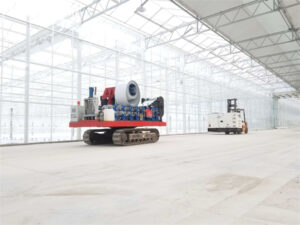 Green modern Agriculture gutter panel roll forming machine with tank chain
Green modern Agriculture gutter panel roll forming machine with tank chain -
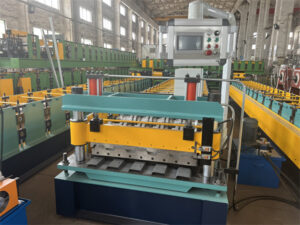 Roll forming machine China for Automatically PPGI Fence Panel
Roll forming machine China for Automatically PPGI Fence Panel -
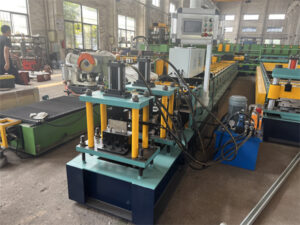 Roll forming machine company for Fence guide Rail
Roll forming machine company for Fence guide Rail -
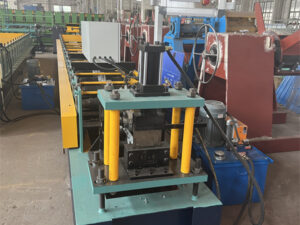 Roll forming machine cost for Fence post guide rail good price
Roll forming machine cost for Fence post guide rail good price -
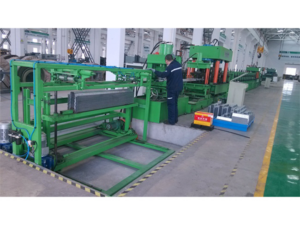 Omega profile roll forming machine price list
Omega profile roll forming machine price list -
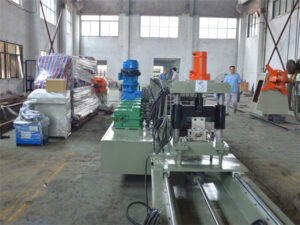 Roll forming machine design Vineyard stakes post Profile
Roll forming machine design Vineyard stakes post Profile -
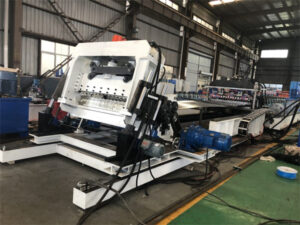 Silo corrugated plate roll forming machine factory
Silo corrugated plate roll forming machine factory -
 High speed Guard Railway Crash barrier roll forming machine
High speed Guard Railway Crash barrier roll forming machine -
 High speed Guard Railway Crash barrier roll forming machine
High speed Guard Railway Crash barrier roll forming machine
What are the benefits of sheet metal roll forming machines?
Roll forming machines offer a number of benefits for those who use them. First, they are able to create complex parts with a high degree of accuracy. Second, they can produce parts with a very tight tolerances. Third, they have the ability to produce parts with a very consistent cross section. Finally, roll forming machines are very versatile and can be used to produce parts from a variety of materials.
How to choose sheet metal roll forming machines?
When it comes to choosing sheet metal roll forming machines, there are a few things you need to keep in mind. First and foremost, you need to decide what type of machine you need. There are two main types of roll forming machines: fixed-axis and variable-axis. Fixed-axis machines are best suited for simple tasks like bending or cutting sheet metal. Variable-axis machines, on the other hand, are more versatile and can be used for more complex tasks like creating curves or doing multiple operations at once.
Once you’ve decided on the type of machine you need, the next step is to choose the right model. There are a variety of different models available on the market, so it’s important to do your research and find one that suits your specific needs. Consider factors such as speed, precision, and durability when making your decision.
Once you’ve found the perfect sheet metal roll forming machine for your needs, be sure to take care of it properly. Regular maintenance will ensure that your machine stays in good condition and continues to perform at its best.
How to Operate a Sheet Metal Roll Forming Machine?
Operating a sheet metal roll forming machine is a relatively simple process, but there are a few things to keep in mind to ensure the best results. Here are some tips:
- make sure the material you’re using is compatible with the machine
- set the machine to the correct settings for your material thickness and desired final shape
- feed the material into the machine slowly and evenly
- once the material has been fed through, trim any excess off before moving on to the next step

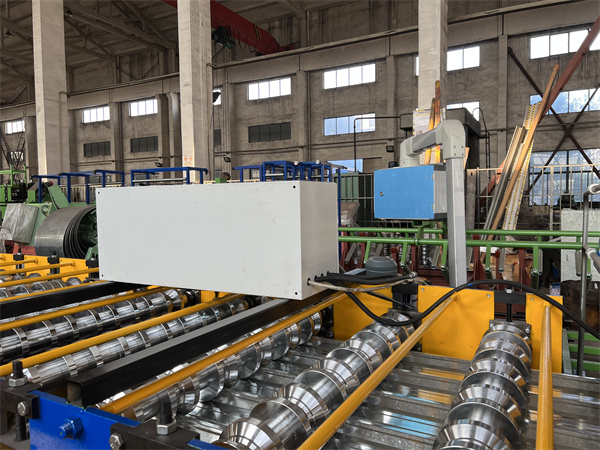

Conclusion
Sheet metal roll forming machines are a great investment for any business that relies on sheet metal for its products or components. With this machine, you’ll be able to produce high-quality sheet metal parts quickly and efficiently, without having to outsource the work to a third-party. If you’re looking for a way to improve your business’s bottom line, investing in a roll forming machine is definitely worth considering.
FAQ
Is rolling a sheet metal forming process?
In metalworking, rolling is a metal forming process in which metal stock is passed through one or more pairs of rolls to reduce the thickness, to make the thickness uniform, and/or to impart a desired mechanical property. The concept is similar to the rolling of dough.
